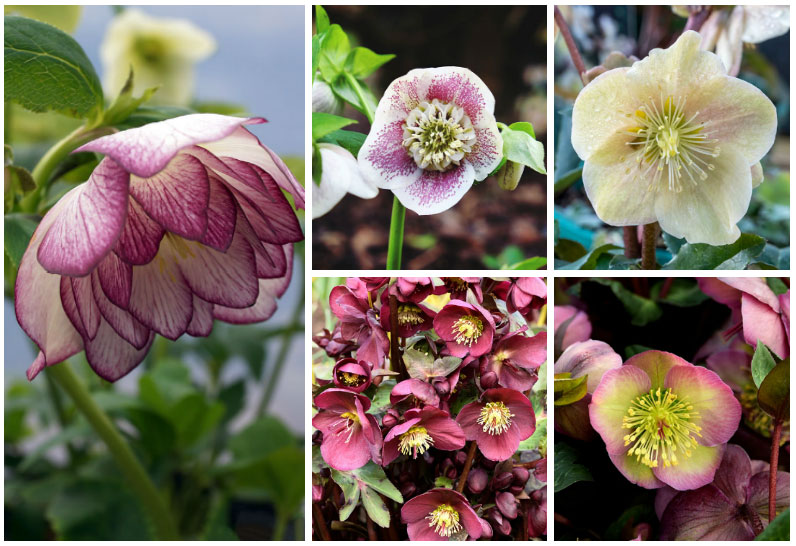
When I want to bring a unique appeal to my garden, I know that I can always depend on hellebores.
These are perennials, and they have beautiful, leathery leaves and can truly produce some colorful flowers that have them appearing in my garden year after year. Hellebores will persist well into the winter, which is why they are often called the “Christmas rose.” Rabbits and deer tend to avoid them, and when you plant them, you can expect blooms as early as January!
Seedlings also drop naturally from hellebores, and the seeds that you gather this way may even take on unique appearances from their parent plant.
Let’s take a look at 11 different types of hellebore.
11 Gorgeous Hellebore Varieties
1) Helleborus ‘Anna’s Red’
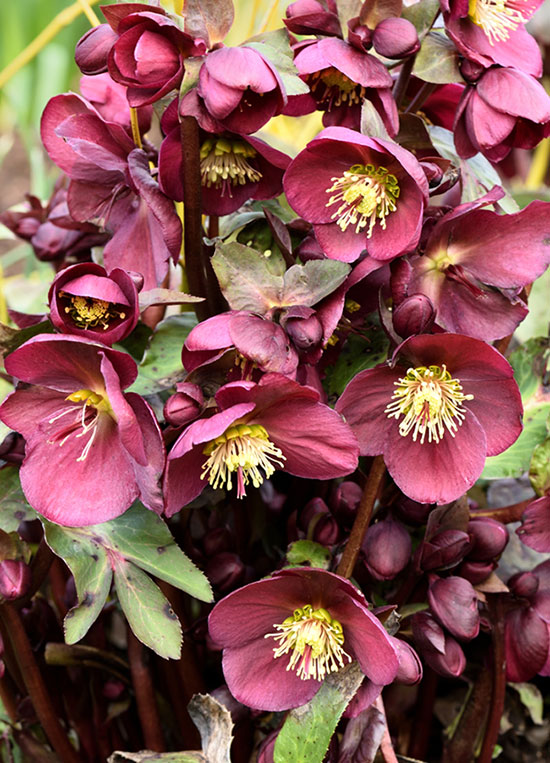
Anna’s red isn’t a typical flowering red; it has a coloration that’s more akin to plum, but this is a beautiful plant that has downward-facing blooms like most hellebores. The stamens on these blooms are bright yellow, so they make a startling contrast. They grow from late winter to mid-spring and grow best in part or full shade.
2) Helleborus ‘First Dance’
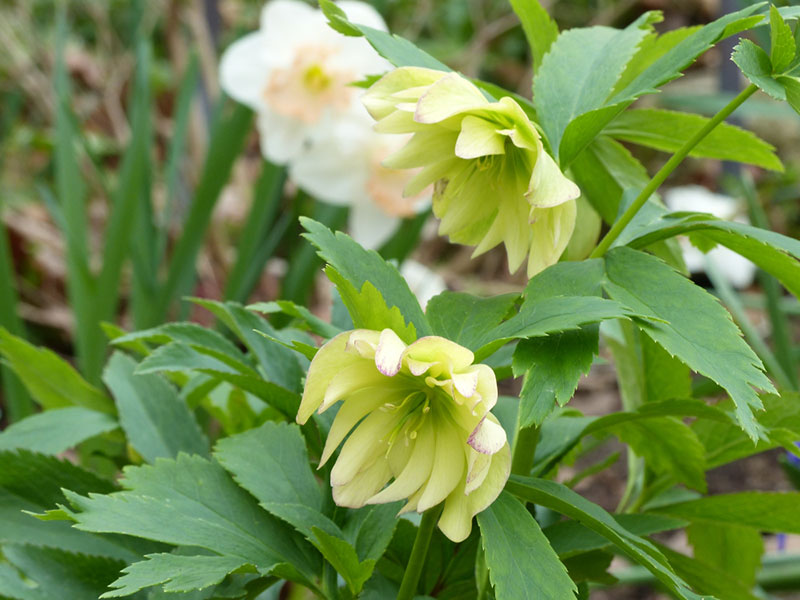
First dances hellebores have a unique spiral pattern to their blooms, which are usually a blend of purple and yellow with a green center. These have a double flower appearance and grow in partial to full shade. They also grow best in moist, alkaline soils, and they can be as tall as 24 inches when mature.
3) Helleborus ‘Ivory Prince’ (Christmas Rose)
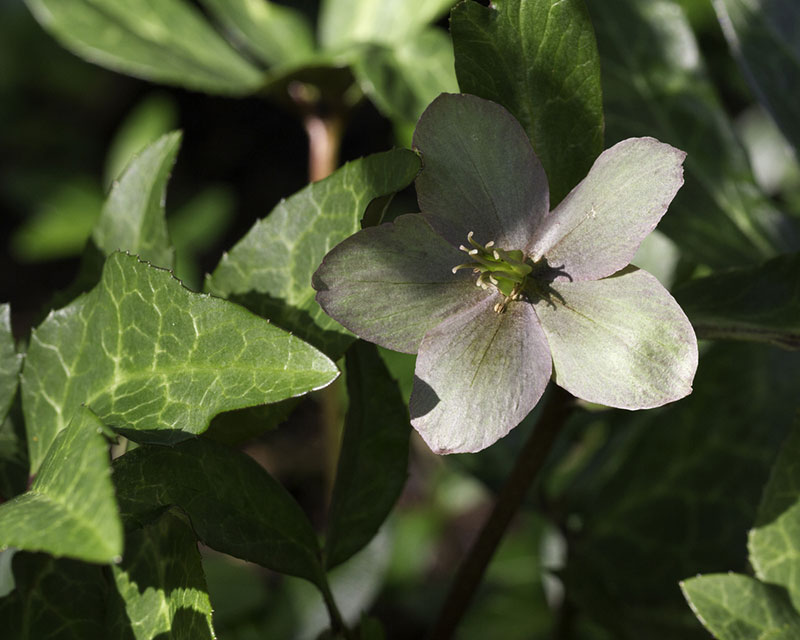
This hellebore variant has the traditional affinity for full to partial shade and loves the alkaline-rich soils that are typical to the plant species. The ivory prince self-seeds and will grow up to 18 inches tall. Blooms on this flower are yellowish-green and are very hardy.
4) Helleborus ‘Penny’s Pink’ (Hellebore)
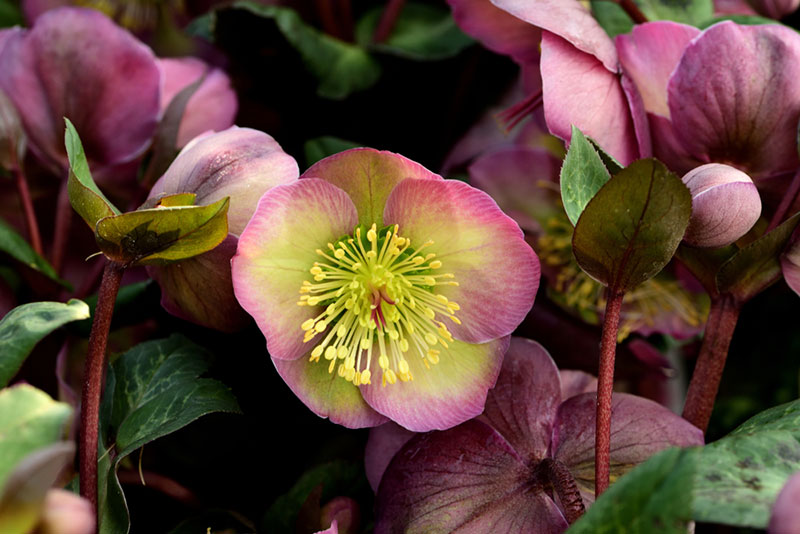
Just like Anna’s red, Penny’s pink isn’t what I would call a traditional pink; the blooms are much darker and lean towards the red end of the spectrum at the petal tips. These are partial to full shade variants that love well-drained, alkaline-rich soils. At their tallest, expect these to grow to 24 inches.
5) Helleborus foetidus (Stinking Hellebore)
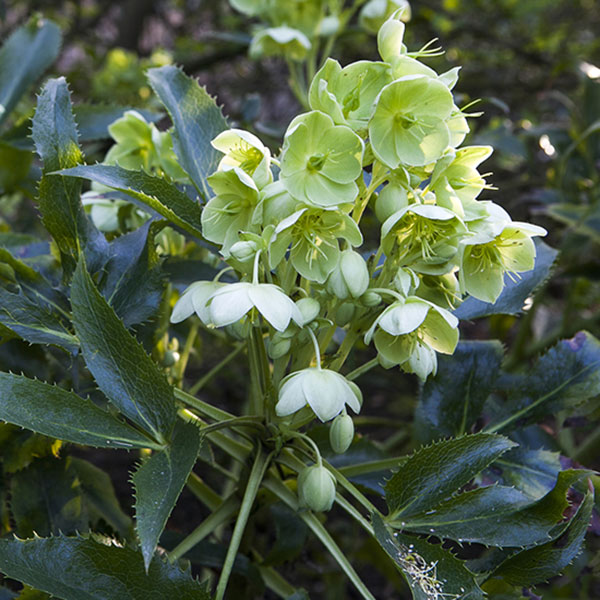
Despite the name, the stinking hellebore produces more of a grassy smell rather than a rank one. These have a unique shaping for a hellebore; their blooms are bell-shaped and light green. These grow best only in partial shade and alkaline soil. Late winter to mid-spring is the blooming period for this hellebore.
6) Helleborus Walberton’s Rosemary (Hellebore)
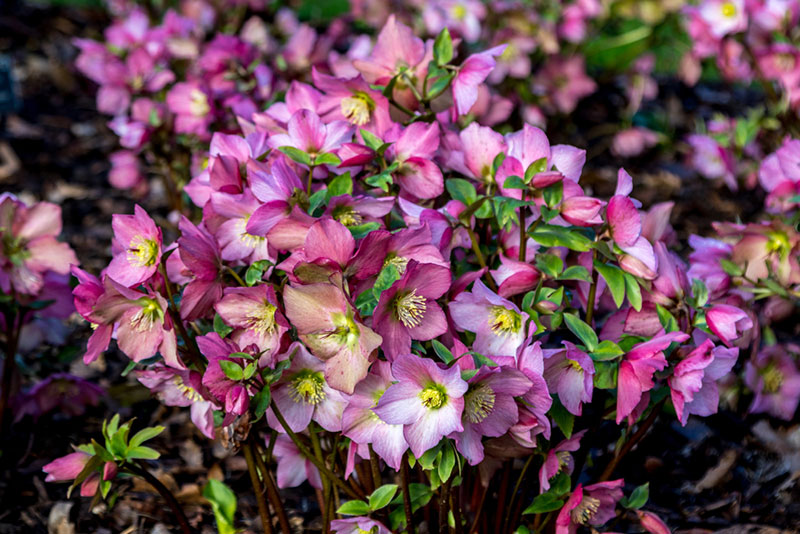
The wrinkled and angular petals of the rosemary hellebore are attractive in any garden. This variety grows well in the shade – either partial or full, and it loves moist soils with alkaline consistency. These grow up to 18 inches in height, and these resist most pests except slugs and aphids.
7) Helleborus Winter Jewels ‘Peppermint Ice’
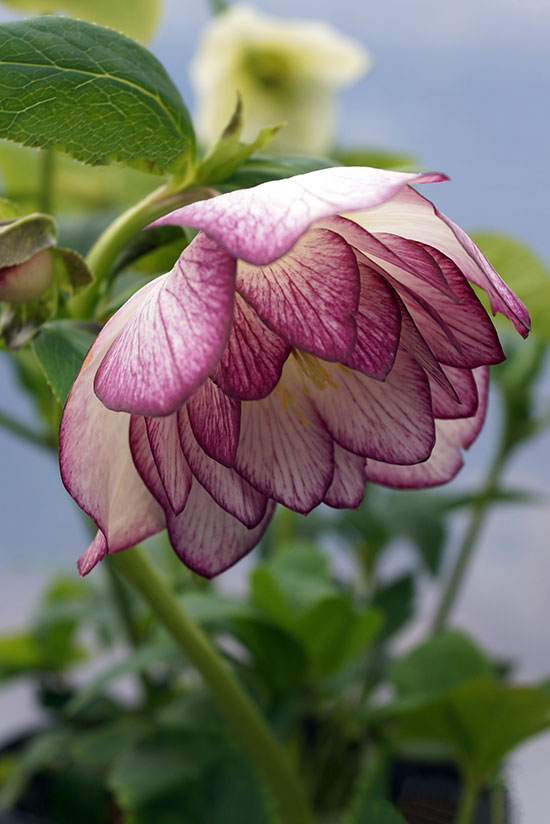
These hellebores grow to be a dark plum color or a bright pink during different points in their growth. These prefer humus-like soil with minimal moisture and high alkalinity. Cold winter winds can damage the leaves, so shield them to offer additional protection to the plant.
8) Helleborus x ballardiae ‘Cinnamon Snow’
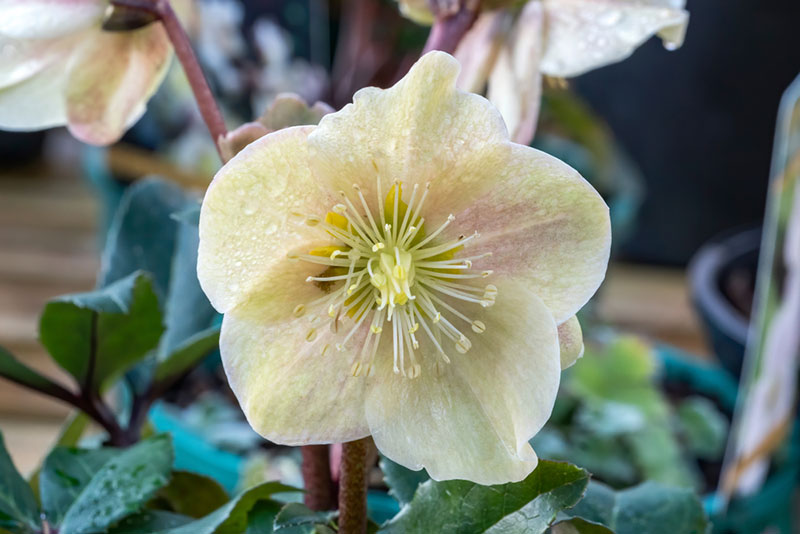
You may be startled when you observe the beautiful cream petals of the cinnamon snow hellebore. There are hints of cinnamon coloring in the beautiful blooms, and you can expect these to grow best in shady areas. These flower extra early in December. The color is even affected by the outside temperature.
9) Helleborus x ballardiae ‘Merlin’
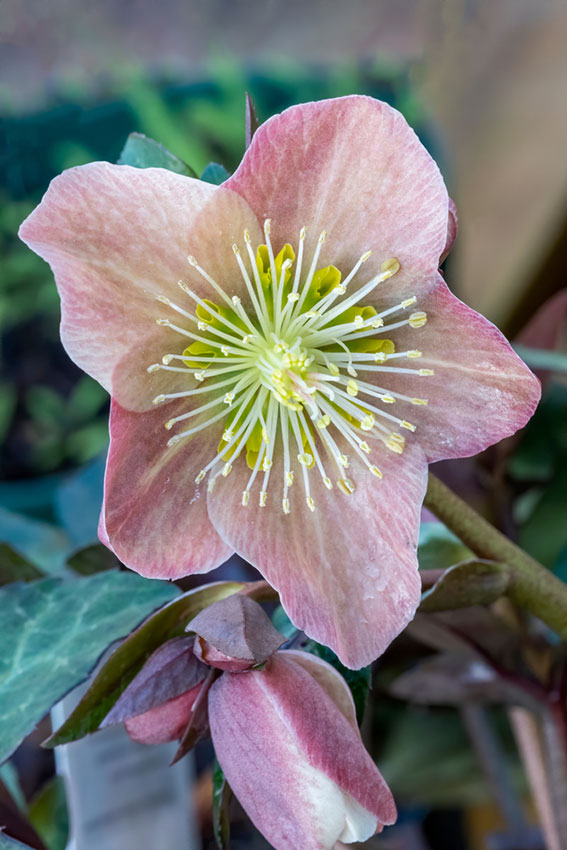
With a magical name like Merlin, it shouldn’t be too surprising that this breed of hellebore looks like an explosion of color. The leaves are pinkish with white veining, and like most hellebores, there’s a crown of yellow stamens in the center. They grow in zone five through zone nine and prefer partial shade to mostly sunny environments.
10) Helleborus x ballardiae HGC Mahogany Snow
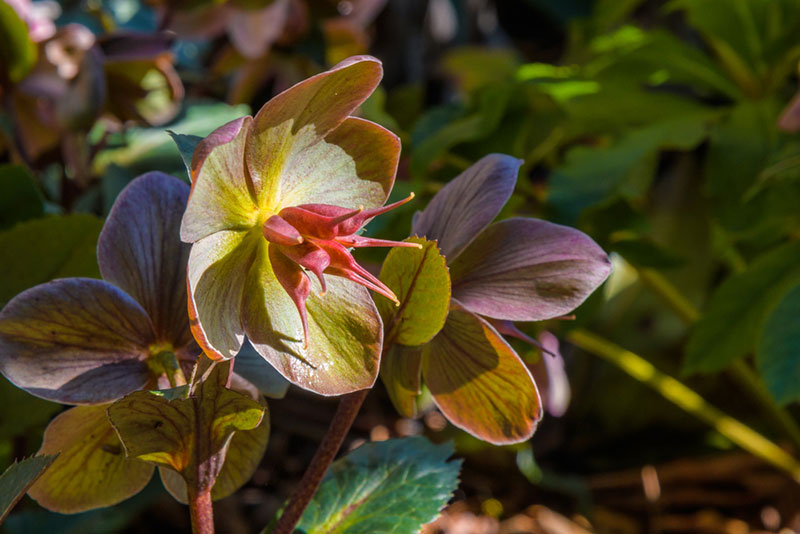
This is another star-shaped hellebore that sports a beautiful cream coloring with burnt tips. At maximum, they grow to about a foot tall and have reddish stems and dark green leaves. Provide these with full shade, and they’ll grow steadily.
11) Helleborus x hybridus Double White Spotted
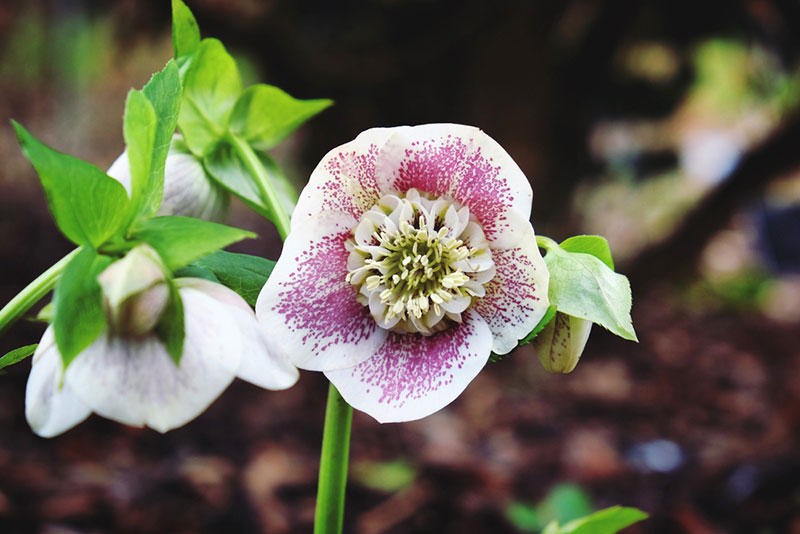
The most striking feature of this hellebore is the red speckling towards the center of each petal. This makes them look stunning, but they are just as hardy as other species of hellebore. They resist pests like rabbits and deer and grow well in shady environments. Use soil that drains well and has high alkalinity.
Conclusion
I hope you enjoyed reading about the different varieties of Hellebore. These are wonderful plants that will thrive in different conditions.




 ?. ts.dhung.
?. ts.dhung.
